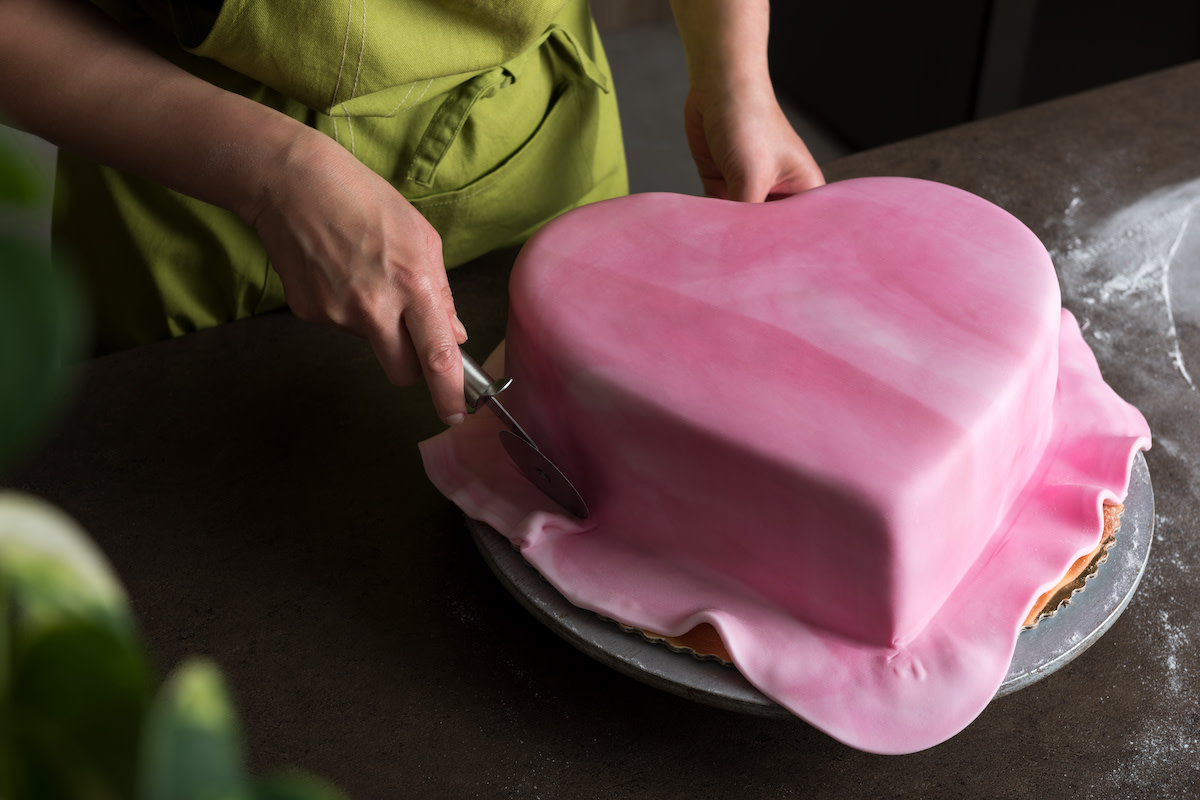Learn the Difference Between Fondant and Marzipan
Written by MasterClass
Last updated: Oct 4, 2021 • 2 min read
Marzipan and fondant are both popular kinds of sugar paste used in cake decorating. Here is how to tell them apart and choose which is right for you.
Learn From the Best
What Is Marzipan?
Marzipan is an almond-based sweet paste used in a series of desserts. Most marzipan recipes use ground almonds or almond paste, glucose, water, sugar, and sometimes egg whites. Marzipan has a firm, clay-like texture allowing bakers to sculpt different shapes, making it popular for decorating cakes with ornamental shapes like fruits or flowers. Marzipan is also used in baked marzipan cookies, chocolate-coated marzipan candies, or fruit-shaped pure marzipan candies. Along with buttercream and fondant, it is one of the most popular icings for decorating cakes, but those with nut allergies should not eat marzipan.
What Is Fondant?
Fondant is a type of moldable icing typically made out of confectioners’ sugar. Fondant is used in cake decorating. The primary ingredient gives fondant a very sweet, sugary taste. Powdered sugar is typically mixed with water and corn syrup to make fondant, which is what gives the icing its pliable, dough-like consistency. There are several different types of fondant, including poured fondant, rolled fondant, and marshmallow fondant. Poured fondant can be easily spread over cakes and biscuits to cover them completely, while rolled fondant can be flattened into sheets to be sculpted and molded over cakes.
Marzipan vs. Fondant: What Is the Difference?
Marzipan and fondant are both popular cake decorating confections that are perfect for sculpting, but there are some key differences between the two of them.
- Ingredients: The main difference between marzipan and fondant is in how they are made. Fondant is primarily made from confectioners’ sugar, corn syrup, and water, while marzipan is made primarily from almond meal and water. This gives marzipan a slightly more solid texture, while fondant is more like traditional icing.
- Taste: Marzipan tastes like almonds and has a more complex flavor profile than sugary sweet fondant. Sometimes cake decorators will even include a few drops of almond extract in their fondant to mimic the taste of marzipan.
- Texture: Marzipan has more of a solid, clay-like texture than fondant, meaning that it can be molded and baked to hold its firmness. Fondant is closer to a thick liquid, meaning it can be poured to cover cakes but it cannot be baked.
- Color: Fondant icing typically has a white color, making it easy to dye into a number of different hues. This makes it a popular option when decorating wedding cakes. Marzipan has a cream color due to its almond paste. It can also be dyed but it will retain a slightly cloudy or muted appearance, and it cannot be dyed white.
- Versatility: Rolled fondant is easier to coat over a cake than marzipan is. Marzipan can become rigid, particularly once you bake it. Cake decorators often use fondant for delicate cake decorations, such as flowers or figurines, while marzipan can be molded and sculpted like clay.
Want to Learn More About Baking?
Become a better baker with the MasterClass Annual Membership. Gain access to exclusive video lessons taught by the world’s best, including Dominique Ansel, Joanne Chang, Gordon Ramsay, Chef Thomas Keller, Mashama Bailey, and more.
